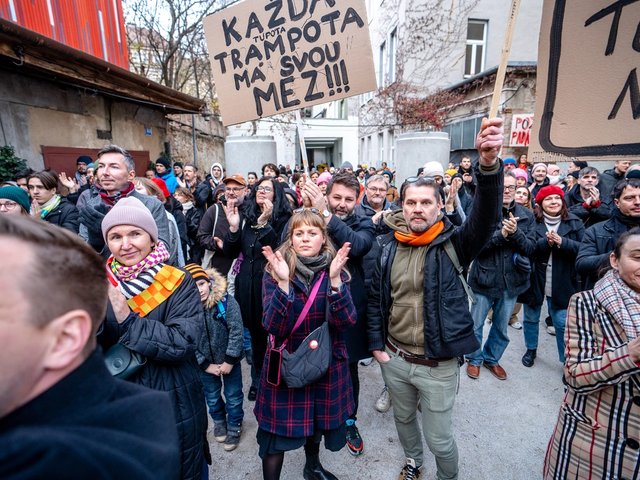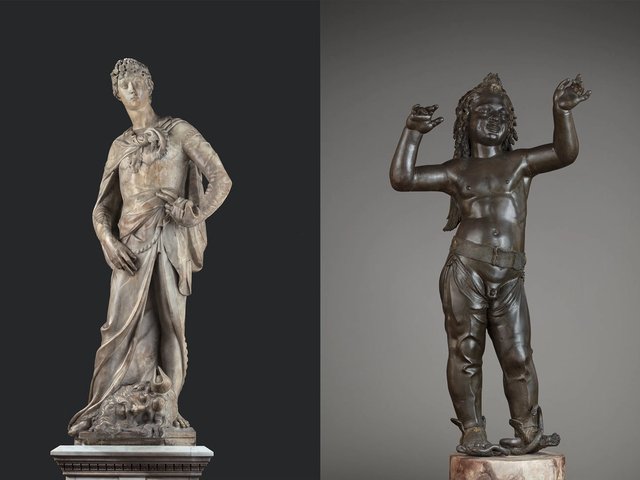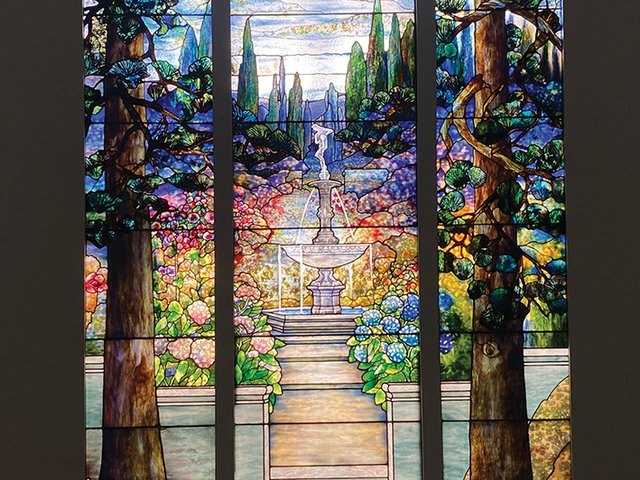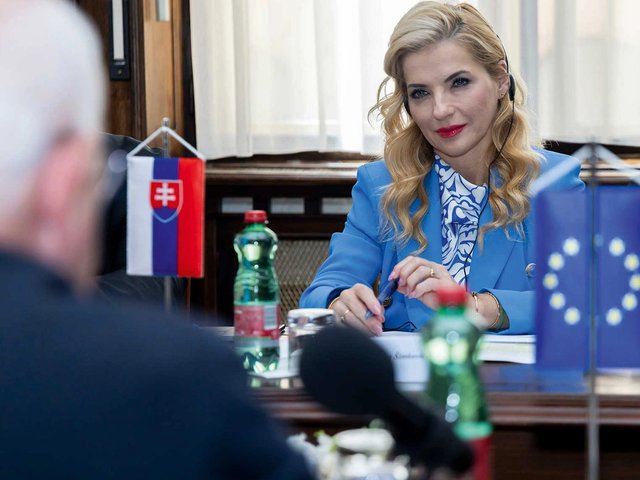Slovakia’s right wing culture minister, Martina Šimkovičová, has sparked criticism in the country by ordering the unexpected removal, under police escort, of a marble bust from the Spiš Museum, in Levoča, in the east of the country.
Originally identified in 2019 by the Slovak art historian Marta Herucová, the sculpture has gained notoriety for reputedly being a lost work by the Renaissance master Donatello, purporting to depict the 15th century Italian noblewoman Cecilia Gonzaga.
According to reports in the Slovak press, Lukáš Machala, a secretary general at the ministry of culture, and an ally of Šimkovičová, arrived at the Spiš Museum, one of the 18 museums forming part of the Slovak National Museum (SNM), on 29 May, accompanied by heavily armed police officers wearing balaclavas. Meeting with the museum’s recently appointed director, Ján Pavlov, Machala took possession of the bust, taking it away to an undisclosed location. The extraordinary events were captured by the local Slovak television station, TV Levoča, with the footage embargoed by the government until the following week.
In a statement released on 3 June, the ministry confirmed it had “taken extraordinary security measures to ensure the protection of an exceptionally rare collection item”. Urging the public and the media “not to disclose any sensitive information” and confirming the involvement of the police, the statement said the museum lacked the necessary “security standards” to protect the work and that its location was now “subject to strict secrecy”.
While the ministry of culture is yet to release further details, a spokesperson for the SNM informs The Art Newspaper that “the bust of Cecilia Gonzaga, which is believed to potentially be the work of the Italian Renaissance master Donatello, has been relocated within the organisational structure of the ministry of the interior of the Slovak Republic to ensure the highest level of protection and security. This item has been placed into safekeeping for the purpose of further expert examination, which will contribute to its comprehensive evaluation.”
In a post on his Telegram account, Machala said that the ministry of the interior could offer the bust a “level of security” unmatched by any of the country’s museums.
An authentic Donatello?
Herucová, an art historian at the Slovak Academy of Sciences in Bratislava, first came across the bust in a depository while researching the Spiš Museum’s 19th century collection. The bust had arrived at the museum in 1975, from the former mansion of the aristocratic Csáky family, with the artist listed as being “unknown”. Intrigued by the inscription on the bust’s base, which reads “Ceciliae Gonzagae opvs Donatelli”, Herucová came to believe it could be a genuine Donatello, publishing her findings in 2021, in the French art journal Revue de l’Art.
Speaking to The Art Newspaper, Herucová says that while “it would be very hard to give a definite proof one way or the other… I am strongly inclined towards it being the work of Donatello.” She argues that the wealth and power of the Csáky family, as well as their historical ties with the Gonzagas, mean they would have had the resources to obtain such a piece.
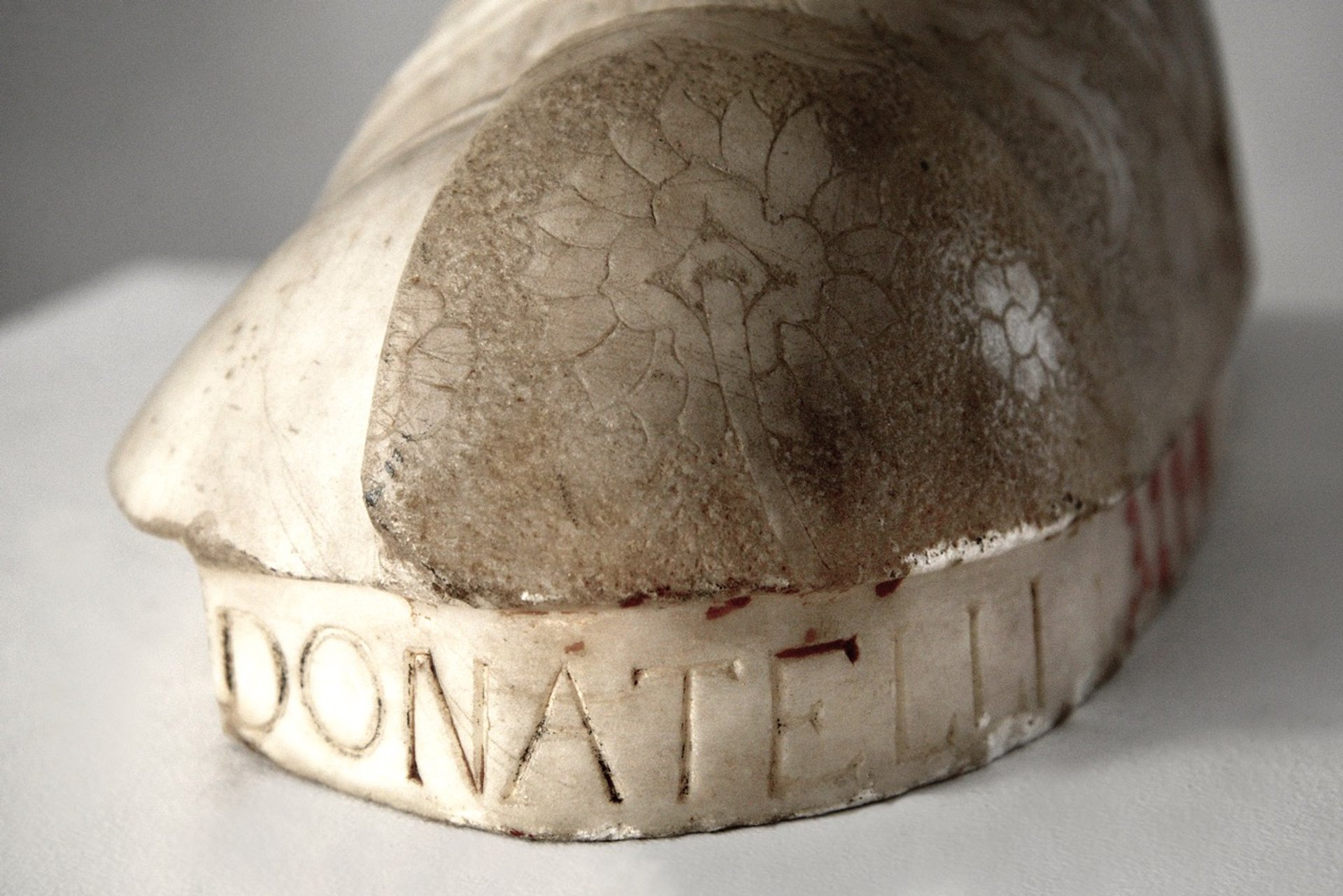
A detail of the bust showing the "Donatelli" inscription on the base Photo: Peter Zupnik, 2021
Herucová, who says she does not “understand why the ministry took the steps it did nor their aim for the future”, is planning to publish further research into the bust in a new book.
Not everyone, however, is convinced of the bust’s authenticity. In a postscript note to a 2021 essay he wrote for the Italian art history journal Prospettiva, the Renaissance expert Francesco Caglioti suggested it was a “modern fake”, derived from the Buste de sainte Constance dite “la Belle Florentine”, a 15th century work in the collection of the Musée du Louvre in Paris.
Caglioti tells The Art Newspaper that the Louvre bust, which is attributed to the circle of Desiderio da Settignano, was the source for numerous 19th century copies.
The Italian art historian, who curated an acclaimed Donatello exhibition at Florence’s Palazzo Strozzi in 2022, says he would welcome the opportunity to view the Levoča bust in person to verify his opinion, which is currently based on viewing detailed images of the bust in print and online.
From her perspective, Herucová agrees there is a “possible connection” with the work in the Louvre, but considers “the Levoča bust to be superior in quality with an identifying inscription and a signature, and therefore the prototype rather than a copy.”
Regarding the significance of someone uncovering a genuine Donatello bust, Caglioti says: “We know of no individual portrait busts by Donatello. Much less signed busts. The works Donatello signed are very few compared to all those he did. And these are only the most monumental ones: the equestrian monument of Gattamelata in Padua, the bronze Judith group in the Medici Garden, two tombs in churches in Rome and Siena.”
A political hot potato
Uncertainty over the Levoča bust’s authenticity have not stopped it from becoming embroiled in the deep divisions separating the ministry of culture from many of the country’s arts professionals, who have repeatedly called for Šimkovičová to resign in response to what they see as her overly nationalistic, divisive agenda.
A former television presenter, Šimkovičová is a member of the Slovak National Party and has been minister of culture since October 2023, when she was appointed as part of the prime minister Robert Fico’s newly formed coalition government. While Fico comes from a left-wing background, much of his nationalist-populist rhetoric aligns with Šimkovičová’s own pronouncements.
Since taking power, the government has been accused of carrying out a sustained “purge” of leading cultural institutions, with mass protests taking place in summer 2024, following the removal of the heads of the country’s National Theatre and National Gallery. The dismissals also saw the launch of a nationwide Cultural Strike, coordinated by the activist collective Otvorená Kultúra! (open culture).
While details of Herucová’s possible discovery have been publicly available since 2021, it was not until she presented her findings at a press conference organised by Otvorená Kultúra!, in February this year, that media interest in the Levoča bust began to take off.
Herucová says the press conference was partly held to convey concerns that personal changes initiated by the government might undermine the professional handling of the bust. Both the former director of the Spiš Museum, Dáša Uharčeková Pavúková, and the director of the entire SNM, Branislav Panis, are among those who have been replaced by Šimkovičová.
In a statement published at the time of the press conference on its Facebook page, Otvorená Kultúra! accused the government of “appointing people without professional experience or the necessary education to lead cultural institutions” and called on “the management of the Spiš Museum in Levoča and the ministry of culture to ensure the maximum protection of this precious work!”
The 3 June statement released by the ministry of culture referenced this message, describing the removal of the bust as “a response to the call, but also a legal step to prevent any possible risks to which this rare collection item could be exposed.”
Heated Debate
The statement also publicly criticised Branislav Panis, and Slovakia’s former minister of culture, Natália Milanová, for failing to “express any professional or operational interest in the discovery” of the bust, and for neglecting “their duty to take steps to secure the collection item in accordance with the law”.
In response, Panis who was dismissed as SNM director in September last year, says: “I can state with confidence that this is not true. Until last autumn, the bust was stored in a newly built depository and kept in a safe purchased for this purpose. In addition to mechanical locks, the premises were protected by an electronic security system with an alarm connected to a nearby security service, which could intervene within minutes if necessary.”
Panis explains that when he was director, the SNM was planning to exhibit the bust and publish a monograph on the work once “its authenticity had been confirmed and the documentation had been finalised”.
Panis, who remains employed by the SNM as a curator at the Historical Museum in Bratislava Castle, “believes and hopes” that the bust “can be original”, but argues that without further investigation by international specialists “it’s hard to claim” its authenticity definitively.
His approach, he says, was to be “cautious” before presenting the sculpture to the public. “Unfortunately,” Panis adds, “events have taken a different turn and now it is chaos.”
The ministry of culture did not respond to a request for comment.



